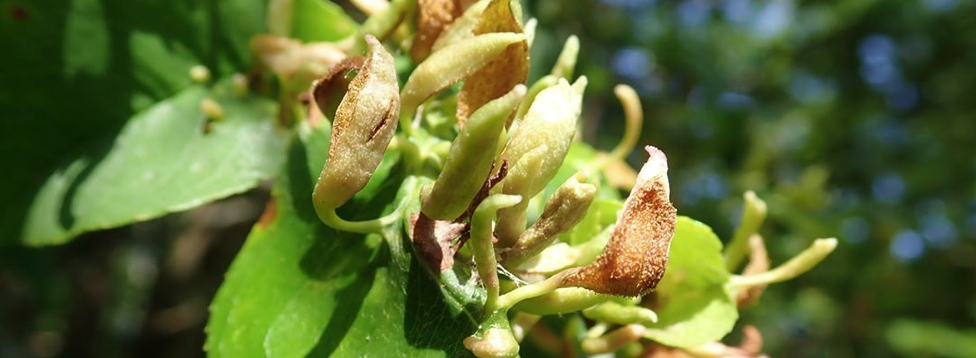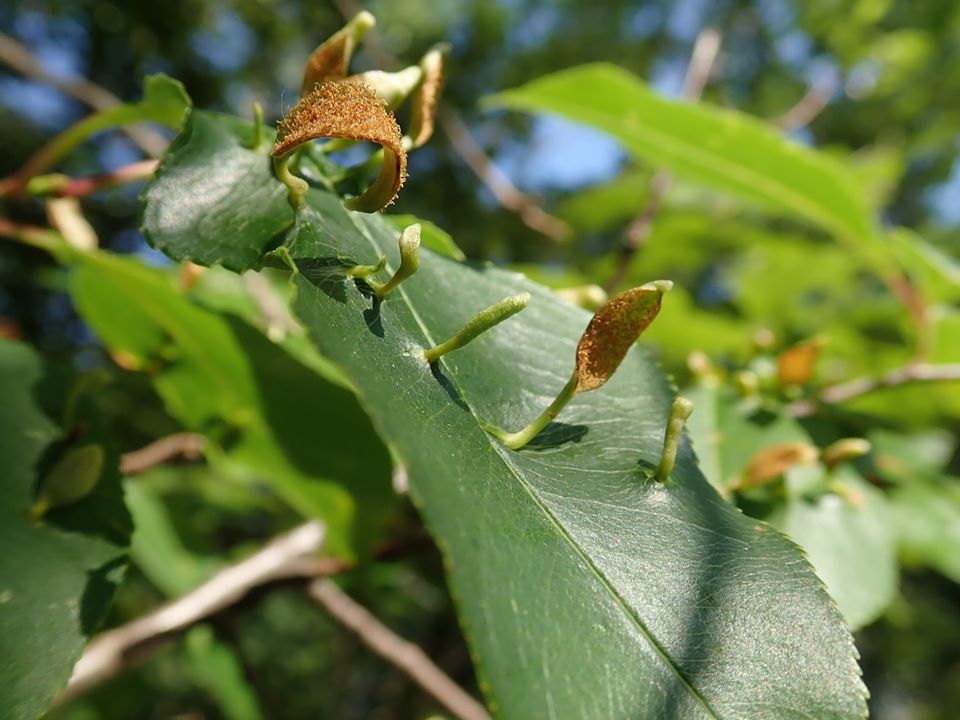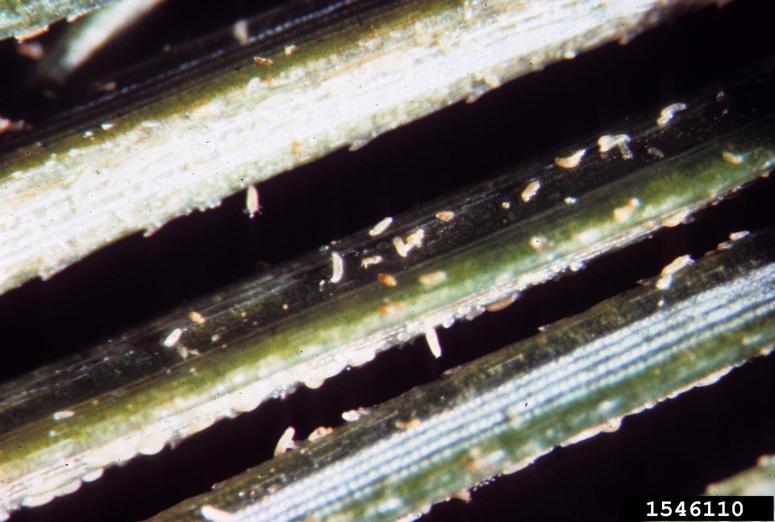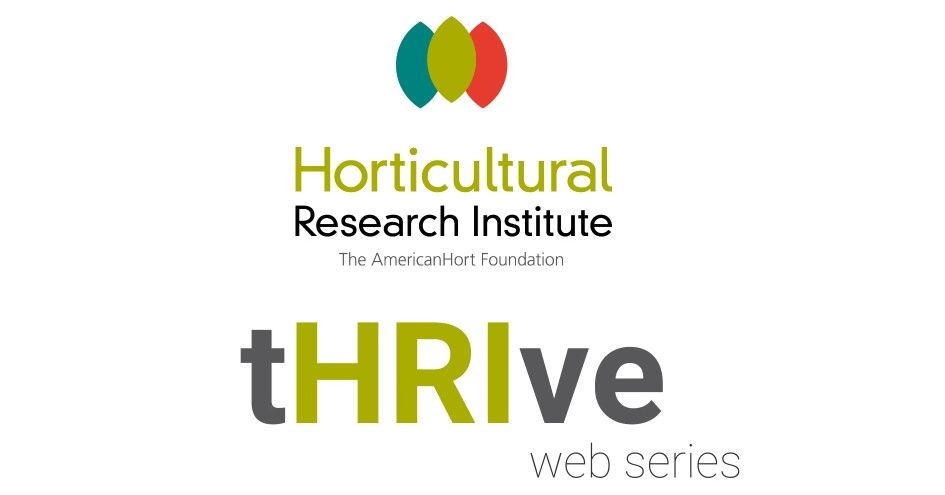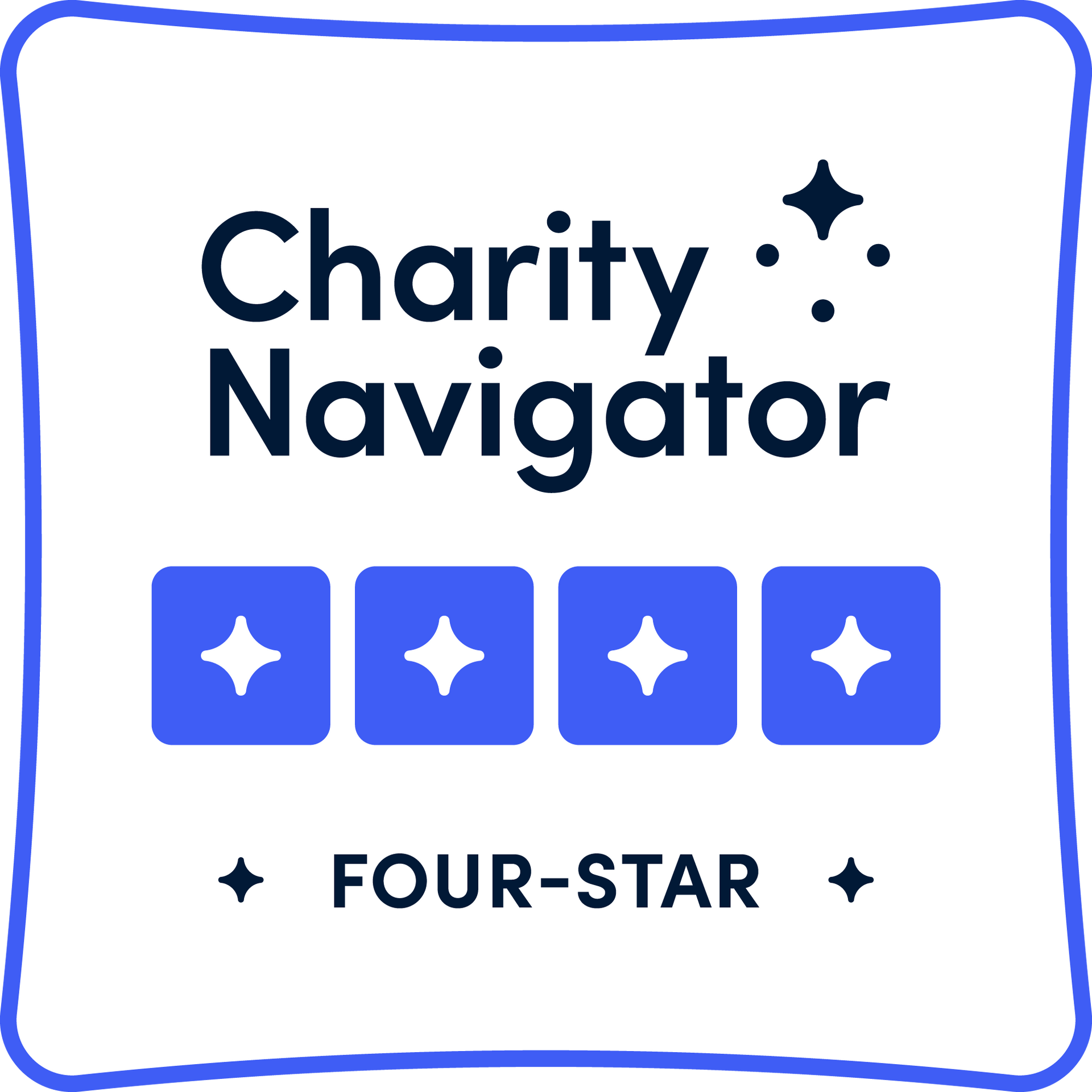Mighty Mites
HAVE YOU EVER NOTICED FUNKY-LOOKING MAPLE OR CHERRY LEAVES?
Right about this time of the year, as we say goodbye to spring and move into full summer mode, is when they can be found – leaves that almost look like they need a shave. It’s not really hair though. Those growths are called spindle galls, and they are formed by the feeding of teeny, tiny eriophyid mites.
Maybe you’ve heard of mites before; spider mites are pretty common. Eriophyid mites, however, are even smaller than spider mites; they average about 1/100” long. They can only be seen with the aid of a hand lens or microscope, and for this reason often go undetected. For comparison, spider mites are about 0.04”, or less than 1mm. Neither are technically insects; they both are more closely related to spiders.
Spindle galls formed by eriophyid mites. Photo courtesy J. Calabro.
Regardless of all that, they can do some neat things to leaves. Eriophyid mites cause leaf distortion from their feeding. Some eriophyid mites cause bronzing or reddening of leaves, as is the case with the mite that transmits rose rosette virus. As they infest leaf surfaces and suck plant juices, their spit often transfers a toxin to the plant that alters the plant’s normal plant growth hormones, resulting in more and larger plant cells. And in the case of cherry (and maple), spindle galls form!
Inside those galls are slow-moving, carrot-shaped, feeding mites. Female eriophyid mites overwinter in bark crevices or other protected parts of the tree and have already been fertilized. When spring comes, they move to developing, unfolding leaves and set to work. The gall eventually envelopes the feeding mite – it will even continue to develop if the mite dies or leaves, since the plant growth hormone shift has already occurred – and protects the mite from any predators or miticide. Eggs are eventually laid in the gall, and the adult moves to other newly emerging leaves. Only new leaves produce galls; mature leaves do not. Therefore, gall formation ceases by mid-summer.
Not to worry, spindle galls (and similar bladder galls) do not inflict much harm to the plant. In severe infestations, leaves may drop prematurely, but generally the tree feels no long-term, negative impacts. They just look funky for a while.
Dr. Jill Calabro
Research & Science Director
HRI & AmericanHort
Share This Post





